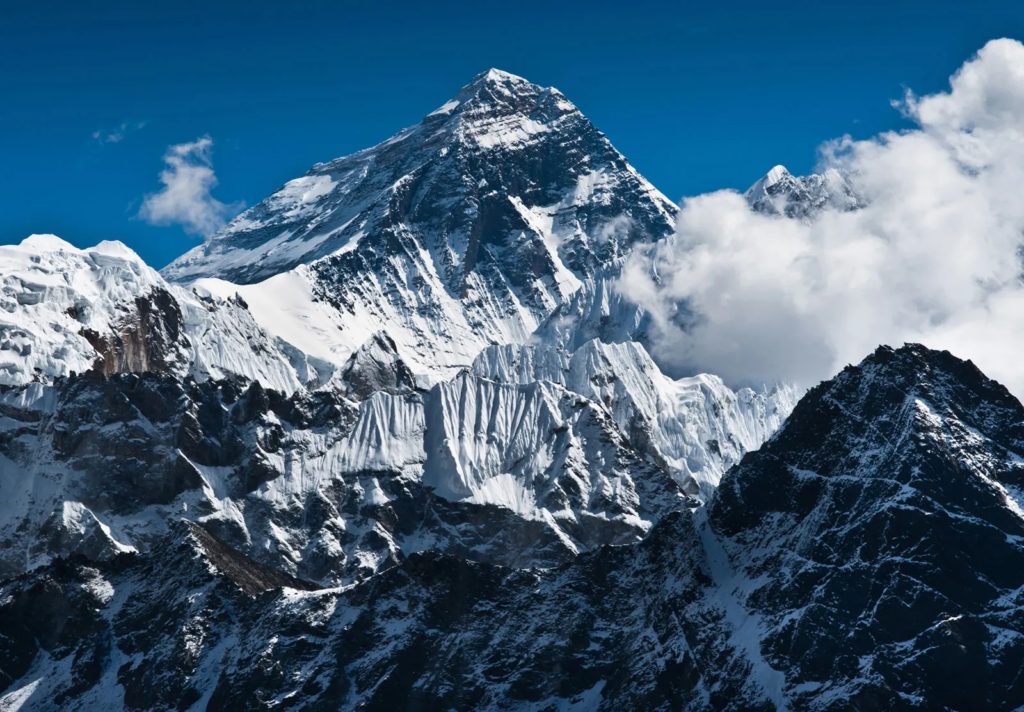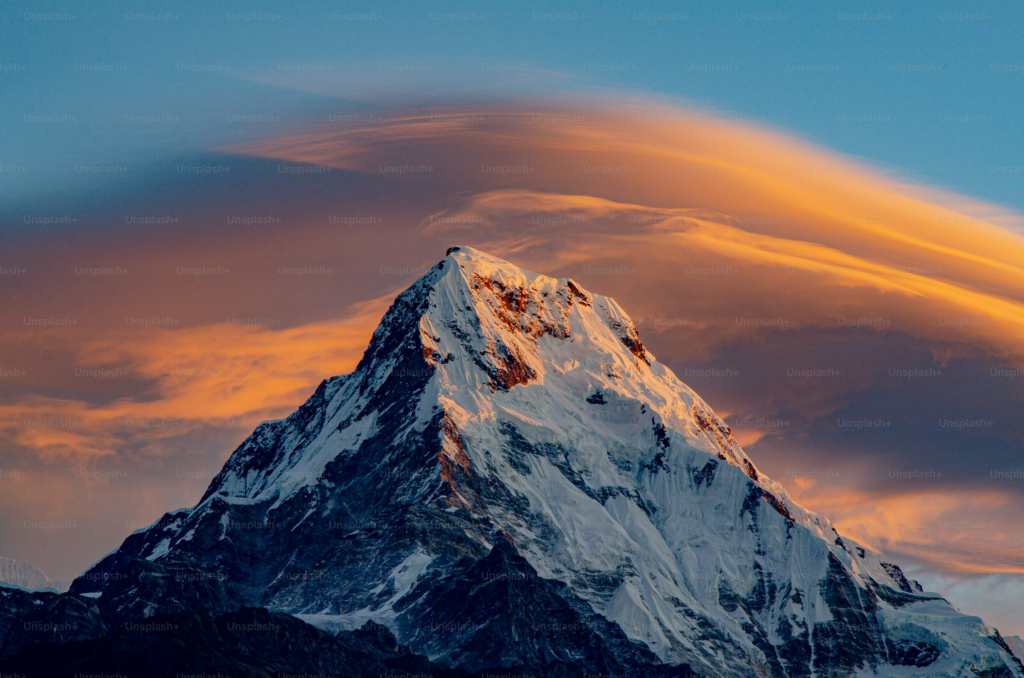Mount Everest, the tallest mountain in the world, is not only renowned for its majestic height but is also continuously rising. Standing as a symbol of nature’s grandeur, Mount Everest has always captivated the imagination of adventurers and scientists alike.
However, recent research shows that Mount Everest is not static; it is, in fact, still growing every year, defying the belief that its height is permanent.
The Ongoing Growth of Mount Everest
According to groundbreaking research from University College London, Everest has ‘grown’ by approximately 15 to 50 meters over the last 89,000 years.
This growth isn’t a one-time event but a gradual process that continues even today. The massive mountain rises by around two millimeters annually, a phenomenon attributed to natural geological forces at work beneath the Earth’s surface. This constant elevation further solidifies Everest’s place as the highest point on Earth.
Read : Olympus Mons: The Tallest Mountain of the Solar System
The research reveals that Everest’s growth is linked to the erosion of nearby rivers, particularly the Arun River, which is located around 75 kilometers from the mountain’s base.
Read : Elevating Heights: Discovering the Top 10 Largest Mountains Across the Globe
As tonnes of rock and sediment are carried away by the river, the pressure on the Earth’s crust beneath Mount Everest decreases. This reduction in weight causes the land to rise through a process known as isostatic rebound. The mantle, the layer beneath the Earth’s crust, pushes upwards, gradually increasing the mountain’s height.
The Science Behind Everest’s Growth
The upward movement of Mount Everest is driven by the dynamics of the Earth’s mantle. The Arun River’s erosion has created a deep gorge near the mountain, which further lightens the land around Mount Everest.

The ongoing removal of rock and soil means the Earth’s crust is lighter, allowing the mantle to push upwards. This process of isostatic rebound plays a key role in Mount Everest’s continued growth.
Researchers involved in the study, including Dr. Xu Han, emphasized that the mountain’s height change showcases the dynamic nature of the Earth’s surface.
Mount Everest isn’t just a static giant but a living, growing feature of the planet. PhD student Adam Smith, a co-author of the study, pointed out that Mount Everest remains a “mountain of myth and legend” that is still growing.
The study highlights how forces beneath the Earth’s surface, combined with the erosion from nearby rivers, work in tandem to push the mountain higher than it would naturally be.
Using advanced GPS technology, scientists can monitor Mount Everest’s growth. Satellite imagery captures the minuscule shifts in the mountain’s elevation, allowing researchers to track the two-millimeter rise each year.
This monitoring is crucial, as it helps geologists understand how tectonic and surface processes interact to shape the planet’s tallest peaks.
The Role of Rivers and Erosion
One of the most fascinating aspects of Mount Everest’s growth is the role of the Arun River. Located near the base of the mountain, this river network is responsible for carving through the land and creating a gorge that accelerates erosion.
As tonnes of rock and sediment are carried away, the Earth’s mantle beneath Mount Everest experiences less pressure. This reduction in pressure allows the mountain to rise incrementally over thousands of years.

The Arun River’s influence on Mount Everest showcases how natural water systems and geological processes are intricately linked. While Mount Everest may be thousands of kilometers away from any active volcanic or tectonic zones, the sediment displacement from rivers like the Arun has a direct impact on its elevation.
The constant erosion, combined with the gradual upward push from beneath the Earth, ensures that Mount Everest remains the world’s tallest peak, and that its height continues to increase.
The Challenges of Climbing Mount Everest
Though Mount Everest is continuously growing, this does not make it any easier to conquer. The mountain lies within the rugged Himalayan range on the border of Nepal and Tibet.
The harsh environment, extreme weather, and the thin atmosphere make Mount Everest one of the most dangerous and challenging climbs on Earth. Only seasoned climbers equipped with specialist guides and expensive equipment can hope to reach its summit.

Even as the mountain grows taller, the logistical difficulties of climbing it remain immense. The terrain leading to Mount Everest is both awe-inspiring and treacherous. Climbers must contend with avalanches, crevasses, and severe altitude sickness.
The higher Mount Everest rises, the thinner the air becomes at its peak, adding to the already immense challenges faced by those attempting the climb.
Despite these obstacles, the allure of summiting Everest continues to draw adventurers from around the world. The mountain, though slightly taller than it was millennia ago, remains a test of human endurance and determination.
The Significance of Mount Everest’s Growth
The fact that Everest is still growing has important implications for both science and culture. From a scientific standpoint, it provides a deeper understanding of the Earth’s geology, the forces at play beneath the crust, and how erosion and isostatic rebound contribute to mountain formation.
The findings also open up avenues for further research on other towering peaks around the world that may also be growing, albeit at different rates.
Culturally, Everest has always been a symbol of human aspiration, and its growth adds to its legendary status. The mountain has been the subject of countless stories, expeditions, and feats of endurance.
Now, with the knowledge that Everest continues to rise, it adds another layer of wonder to the world’s tallest mountain. Its mythic stature grows alongside its physical height, ensuring that it will remain a focal point of both adventure and scientific inquiry for generations to come.

The research carried out by University College London and other institutions has provided the world with a greater appreciation for the natural forces that shape Everest. It reminds us that the planet is always in flux, with even the most seemingly permanent landmarks undergoing changes over time.
Mount Everest is not only the tallest mountain in the world, but it is also a growing one. The process of isostatic rebound, driven by the erosion of nearby rivers like the Arun, has caused Everest to increase in height by two millimeters every year.
This ongoing growth showcases the dynamic nature of the Earth’s surface and reinforces the mountain’s legendary status. As scientists continue to monitor its progress, Mount Everest stands as a testament to both the forces of nature and the indomitable human spirit that seeks to conquer it.
let’s enjoy few years on earth with peace and happiness….✍🏼🙏

